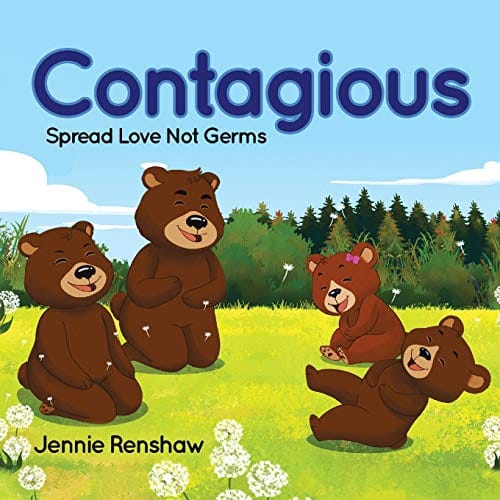Satisfaction Guaranteed: Why It Matters and How to Deliver
Explore why a Satisfaction Guaranteed promise drives conversions and loyalty, and learn practical steps to craft and uphold a winning guarantee policy.

Introduction
“Satisfaction Guaranteed” is more than a catchy slogan you slap on a box or splash across a landing page. It is a promise, a psychological safety net, and, when executed correctly, a powerful growth lever. In a world where shoppers are overwhelmed by choices and wary of risk, a clear guarantee can nudge them from consideration to conversion. Yet the phrase also carries weighty expectations: if customers are dissatisfied, they expect quick remedies without hassle. This article explores what the guarantee really means, why it influences buying behavior, and how your business can deliver on the promise every single time.
What Does “Satisfaction Guaranteed” Mean?
In its simplest form, a satisfaction guarantee is a unilateral contract: if the buyer is not happy with the product or service, the seller agrees to offer a remedy—typically a full refund, replacement, or additional support—within a stated period. Unlike a traditional warranty that covers product defects, a satisfaction guarantee focuses on the customer’s personal experience and perceived value.
Because the language is qualitative, details matter. Businesses must clarify eligibility (all customers or only first-time buyers), the time window (30, 60, or 365 days), and acceptable proof (order number, receipt, or no proof at all). The more explicit the terms, the more credible and enforceable the promise becomes.
Why Consumers Love a Satisfaction Guarantee
Risk reduction is the biggest psychological driver. When people shop online they cannot physically touch or test items; uncertainty breeds friction. A guarantee removes that friction by shifting the risk from buyer to seller. Studies by behavioral economists show that risk-free propositions increase conversion rates by as much as 30 percent, particularly for new or premium-priced products.
Trust is the second driver. A company willing to stand behind its offering telegraphs confidence: “Our product works; if it doesn’t, we will make it right.” Even if customers never claim the guarantee, the mere presence of the policy boosts perceived reliability and reputational capital.
Business Benefits: Guarantee the Win-Win
Critics fear that open-ended guarantees invite abuse. While fraud exists, data from retail and SaaS industries indicate that only a small fraction of buyers exploit the policy. Meanwhile, the upside is substantial:
• Higher conversion rates: Prospects convert faster when barriers are removed.
• Larger average order value: Shoppers feel comfortable adding accessories or bundles, knowing they can send them back.
• Word-of-mouth marketing: Delighted customers become vocal advocates when they see a company honor its guarantee.
• Valuable feedback loop: Return reasons highlight product weaknesses, informing iterative improvements.
Crafting an Ironclad Satisfaction Guaranteed Policy
1. Define the scope. Decide whether the guarantee covers all products or only select categories. Consistency simplifies training and reduces confusion.
2. Set a generous yet realistic time frame. Thirty days is industry standard, but longer windows can differentiate your brand. Casper’s 100-night mattress trial helped it dominate a crowded market.
3. Specify remedies. Offer a full credit, exchange, or no-questions-asked refund. The easier the remedy, the fewer customer service tickets you will generate.
4. Eliminate fine print. If legal constraints require terms, present them in plain language and bullet points. Hidden clauses damage credibility.
5. Protect your business. Use tracking systems to flag chronic returners and implement restocking fees only for obvious abuse, not for honest dissatisfaction.
How to Communicate and Promote Your Guarantee
Placement is everything. Add the “Satisfaction Guaranteed” badge near call-to-action buttons, on product pages, and in the checkout flow. Reinforce it in confirmation emails and packaging inserts to remind buyers they made a risk-free decision.
Language also matters. Instead of relying on clichés, describe specific benefits: “Love your headphones or return them within 60 days for a full refund, shipping on us.” Concrete phrasing feels believable and reduces pre-purchase anxiety.
Finally, leverage social proof. Publish real customer stories that highlight seamless returns or exchanges. Authentic testimonials augment the guarantee’s persuasive power.
Handling Claims Gracefully
When a customer invokes the guarantee, your response can turn a potential detractor into a lifelong fan. Train support teams to listen empathetically, validate concerns, and resolve issues in one interaction whenever possible.
Automate simple processes. For low-cost items, consider issuing instant refunds without requiring returns; the goodwill often outweighs the inventory loss. For larger products, offer prepaid shipping labels and clear instructions, so customers are not left guessing.
After resolution, ask for feedback. A short survey helps you uncover patterns that can reduce future claims while signaling that you genuinely care about satisfaction, not just closing the ticket.
Conclusion & Key Takeaways
A “Satisfaction Guaranteed” promise bridges the gap between buyer skepticism and seller confidence. When crafted with clarity, promoted transparently, and honored without friction, it becomes more than a refund policy—it evolves into a competitive moat. Start by defining straightforward terms, empower your staff to uphold them, and broadcast your pledge at every touchpoint. The result is a virtuous cycle of trust, loyalty, and revenue growth that benefits both your customers and your bottom line.


